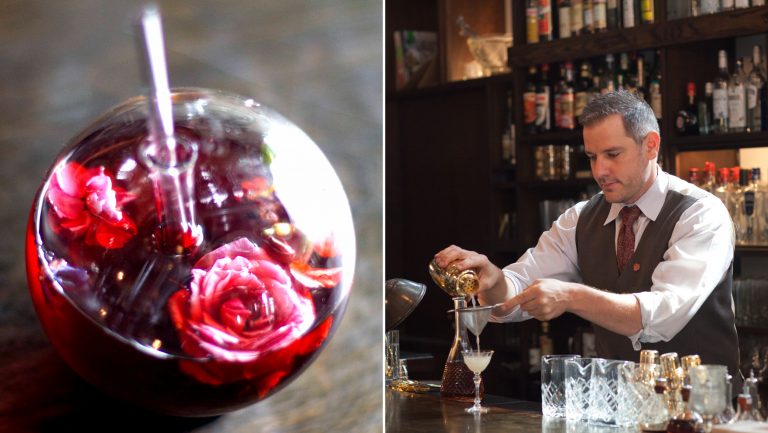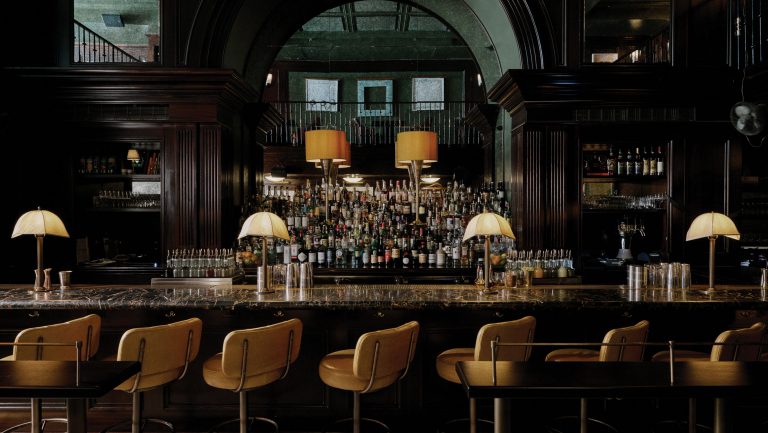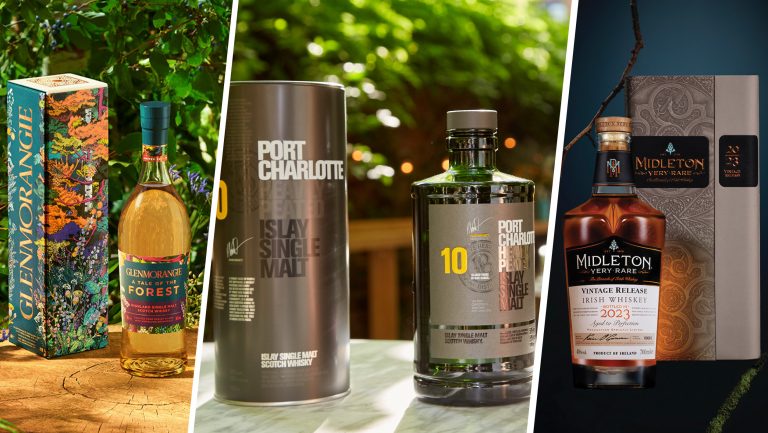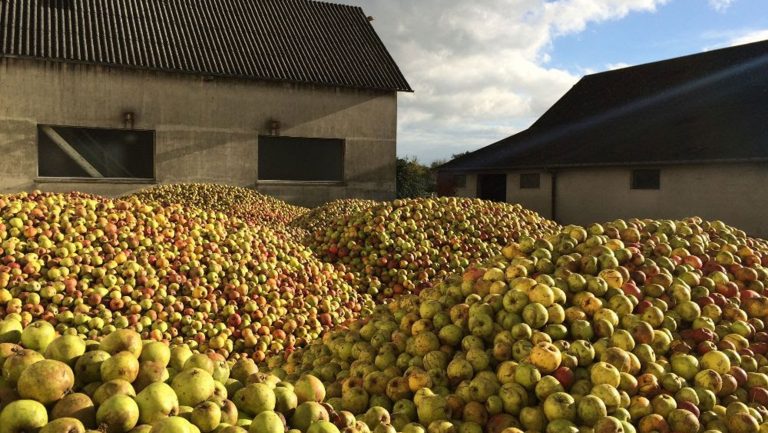Among the categories of the Spirited Awards presented at Tales of the Cocktail each year is World’s Best Cocktail Menu. Ten menus were selected for the penultimate round, with the semifinalists this year featuring cocktails that ranged in style from fanciful to no-nonsense, and in origin from New York and London to Seoul and Singapore. In all, the menus featured 347 cocktails, not counting wine, beer, punches, or drinks made from vintage spirits.
After spending a couple of long afternoons reviewing the menus as a Spirited Awards judge, and then later reviewing them again with a fine-toothed comb (and a spreadsheet), I concluded that there were essentially two things that could be learned with a close look at these cocktails: A whole lot, and not a whole lot.
Let’s start with not a whole lot:

Don’t miss the latest drinks industry news and insights. Sign up for our award-winning newsletters and get insider intel, resources, and trends delivered to your inbox every week.
Most of the venues that made it to this semifinal round were among the world’s cutting-edge bars. These are not your corner pubs offering a beer and a shot. (Although one, Canon in Seattle, had a Booze n Bubbles menu section that, besides the familiar boilermaker, offered Fernet and ginger beer, Chartreuse and root beer, and other creative riffs.)
This World’s Best Cocktail Menu award is given in part for “originality and creativity of design” of the menu itself. Innovative design is expensive, and printing a 20-page menu—around the average length of those submitted—is even more expensive, especially if it’s done quarterly and in full color. Those who made the cut this year included Dandelyan in London, now known as Lyaness, (which ultimately took home the top award), Tippling Club in Singapore, Aviary in Chicago, and BlackTail in New York City—spots that often attract media attention because they’re boundary pushers. They also spend a lot of time and money on cocktail development and the production of highly Instagrammable menus.
So in some ways, examining the top-nominated menus is like determining what people are wearing on the streets by observing the runways during Paris Fashion Week. Many of the drinks are high-concept, high-wire potions, and even variations on classics hone a sharp edge or two. It’s telling that the average price of a cocktail across these 10 lists was $19.02—but more on that below.
Still, for less aspirational craft-cocktail bar owners and serious tipplers, there’s a lot to be gleaned from these top-notch menus. The awards judges look not just at design and concept, but also at the drinks that are showcased, as award criteria also include the diversity of cocktail styles and the range of spirits on offer.
By digging in and taking a close look, bar operators may pick up some ideas despite the white-hot glare surrounding the cool-kid bars. A few takeaways:
1. This is gin’s moment.
Of the 347 drinks on all 10 menus, gin was the favored spirit. Drinks that featured solely gin, were gin-forward, or listed gin ahead of other spirits accounted for 67 of the listed cocktails, or about 20 percent of the total. Gin was especially favored at Bitter & Twisted Cocktail Lounge in Phoenix and Canon in Seattle. Much of its popularity was driven by Negronis (note: not martinis). Several menus—including those of Dante in New York and Bitter & Twisted in Phoenix—offered extensive Negroni variations.
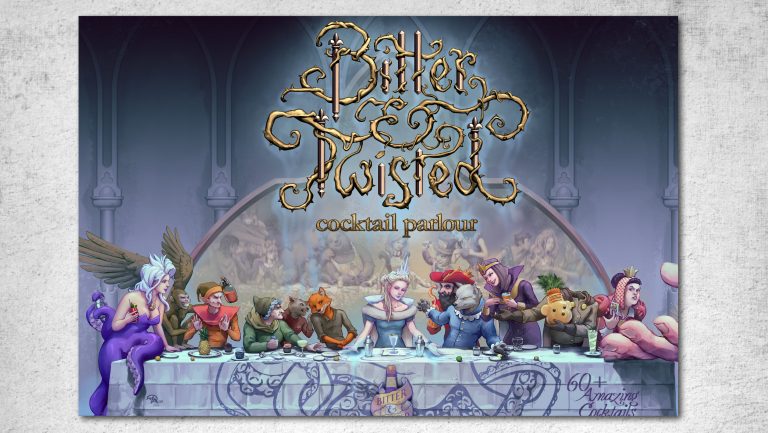
Rum was the spirit runner-up, appearing in 56 cocktails, with BlackTail in New York, a Cuban-themed bar, robust as expected in that category. Bourbon and rye combined accounted for 43 drinks, about evenly split between them, and Scotch found its way into 13 drinks. Vodka, tequila, and brandy weighed in with 31 cocktails apiece.
2. Go ahead—mix spirits.
Mixing spirits from the same category—like rye and bourbon—to add complexity to a drink has become fairly standard in many bars over the past few years. But a number of drinks on these menus mix spirits from wholly different categories.
Among these are That’s Life at The Savoy in London, which mixes Scotch and mezcal (a natural, smoky combo), and a couple of drinks at BlackTail: Gulf Stream, which mixes Irish whiskey, mezcal, and overproof rum; and Fat Cat, which combines gin and tequila. Elsewhere, Canon’s Ruby Cocktail blended gin and mezcal.
Many drinkers have long subscribed to the “Don’t mix liquors” belief to avoid hangovers. Among a more adventurous generation, that motto might be eroding.
3. Analyzing the supporting cast.
No overwhelming trend leapt out as regards mixers or liqueurs, which is not surprising given that most of these bars are pioneers rather than part of the convoy. Lavender seems to be maintaining the minor moment it’s experienced in recent years, and pineapple is strong, appearing in unexpected roles, like a pineapple-infused Madeira at Dandelyan, and a pineapple shrub that makes a cameo in Dante’s Unlikely Negroni.
Coconut makes a showing on the majority of menus. It’s gone beyond the piña colada, with innovative approaches like a coconut-aged bourbon in variations of old-fashioneds at the Charles H. bar at the Four Seasons Hotel in Seoul, and the Thai Night Market, a whiskey drink with coconut, vanilla cream, and tamarind, at Chicago’s Aviary. Then there’s Mace in New York, which had a full-blown love affair with coconut: Numerous cocktails feature ingredients like warm coconut-lemongrass sabayon, coconut water, coconut oil fat-washed gin, green coconut–infused Campari, and young Thai coconut cordial.
Uncommon ingredients were scattered throughout many menus like Easter eggs, which provide a good way for customers to strike up a conversation with the server or bartender. There’s cedar milk at Mace, fermented artichoke at The Savoy, and Cap’n Crunch ice cream, with Champagne, at Canon. Also, two menus featured drinks with “acid tabs” (the Tippling Club and Canon), which presumably are not what they claim.
Here’s what I didn’t see: hyperlocal or foraged ingredients, which have been cropping up increasingly on menus at craft bars I’ve encountered in my travels. If consumers continue to be intrigued by this, it could be a trend that percolates up rather than down.
4. Tell a story—even better, craft a novel.
Four of the menus were essentially storybooks, with the cocktails as supporting characters. The Savoy’s menu, which was the longest, at 60 pages, was entitled “Every Moment Tells a Story” and was nicely illustrated with large-format black-and-white photos of movie and music stars taken by the noted photographer Terry O’Neill. Together, they told a story of an era.
The menu at the Charles H. bar in Seoul was built around its namesake—Charles H. Baker, “history’s greatest bon vivant expat,” according to the menu. His story was told through quotes (“Don’t try and make decent cocktails out of cheap, briefly aged liquors. Stick to highballs, or else do the job right”) and drinks grouped by three cities he favored—Havana, New York, and Bombay.
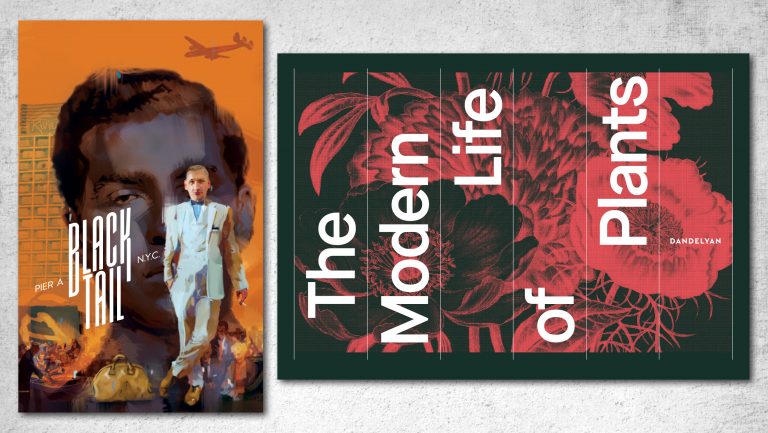
BlackTail’s 48-page menu was the most narrative, anchored with a 5,000-word historical essay about the gangster Meyer Lansky written by the crime journalist T.J. English, and accompanied by evocative, moody paintings of gangsters in white suits. It may be the first menu with a trigger warning: “The story is at times violent—and the language pulls no punches either.”
Bitter & Twisted’s menu narration begins, “A long, long time ago, so long ago that no one can remember …” and then ushers drinkers into a sort of airbrushed Disney-esque medieval fantasy world through lavish, colorful illustrations of pirates, elves, busty mermaids, and angry bearded men.
Themed bars that tell a story by means of decor may run their course (it’s a gamble if you pick the wrong leitmotif), but—as these examples indicate—Instagram-fueled narrative menus appear more healthy and extravagant than ever.
5. If you’re going to send customers to exotics lands, offer a map.
A long, complex menu can be daunting. Most finalists continued the trend of offering guidance with maps or other diagrammatic sketches, a tactic that is both helpful to the overwhelmed and engaging to the aficionado.
The Savoy has a flavor map that places drinks along two axes, from “light and delicate” to “dark and intense.” Bitter & Twisted’s menu features an elaborate spiderweb with drink names set in every typeface known to mankind along the axes Refreshing, Divergent, To the Point, and Play It Safe.
Dandelyan also groups drinks along two axes—light and rich, and night and day, which seems simple and apt. (And Dandelyan offers a sort of CliffsNotes with each cocktail that makes for easy scanning, such as “Forest floor fresh—Early evening pick-me-up.”) The Aviary shows birds in flight either close to or at a distance from the selection, like musical notation. It’s uncertain what this represents, but it’s charming and fun.
6. Streamline cocktail names.
The trend toward long, narrative cocktail names (think: The Time I Went to Talladega for the Races But Ended Up with a Beautiful, Brown-Eyed Son) seems to be over, at least among this group. The average number of words per cocktail on the top 10 menus was an austere 2.4. For now, simplicity reigns.
The drink names on the Tippling Club’s Dreams and Desires cocktail menu were each a single word (Indulgence, Peace, Holiday). Mace’s cocktail menu was built around a botanical guide, with drinks named after a single botanical ingredient, like dill seed, pandan, and lemongrass.
Many finalists’ cocktails were either classics or sounded like it, such as Lady Luck (Dandelyan), Bitter Petals (Canon), or Pinstripe (Savoy). The Aviary had the loosest and punniest nomenclature, with Ain’t Nobody Got Lime for That, It Was a Rum by Fruiting, and Feather Knows Best.
7. You want how much for that drink?
It’s hard to compare drink prices across the board, given international exchange rates and pricing differentials between hotel bars and stand-alone bars. That said, prices were all over the board. The price for a drink at these 10 bars averaged $19.02. (That’s not counting special or multicustomer drinks, like bottled or bowl drinks, or cocktails made with vintage spirits—like Canon’s $225 vintage Negroni with 1971 Tanqueray, 1970 Campari, and 1960 vermouth; or the Savoy’s $6,400 vintage Sazerac, made with 1858 Sazerac de Forge, 1950s-era Pernod Absinthe, and vintage Peychaud’s Bitters.)
The highest average drink price at one bar was at the Savoy—$34.25. If we omit hotel bars, the average price of a cocktail among the remaining bars was $16.28.
These prices serve as a reminder that top-tier bars are actually in the entertainment business. The costs thus fit somewhere between a movie ($9 average price in the U.S.) and a live concert ($46.69 average ticket price this year). Even if guests order a few drinks, they’re probably still doing better than a Broadway play ($109 average ticket price).

Dispatch
Sign up for our award-winning newsletter
Don’t miss the latest drinks industry news and insights—delivered to your inbox every week.
Wayne Curtis is the author of And a Bottle of Rum: A History of the New World in Ten Cocktails and has written frequently about spirits for The Atlantic, Imbibe Magazine, Punch, The Daily Beast, and Garden & Gun, among others.

